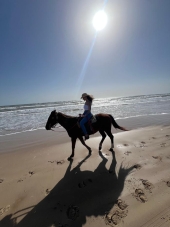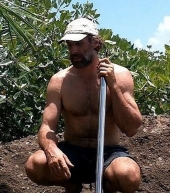
 3
3




 2
2








"Study books and observe nature; if they do not agree, throw away the books." ~ William A. Albrecht




 1
1




Iterations are fine, we don't have to be perfect
My 2nd Location:Florida HardinessZone:10 AHS:10 GDD:8500 Rainfall:2in/mth winter, 8in/mth summer, Soil:Sand pH8 Flat
 5
5




 3
3





 3
3




"Never doubt that a small group of thoughtful, committed citizens can change the world; indeed, it's the only thing that ever has."-Margaret Mead "The only thing worse than being blind, is having sight but no vision."-Helen Keller




John Daley Bendigo, Australia The Enemy of progress is the hope of a perfect plan
Benefits of rainfall collection https://permies.com/t/88043/benefits-rainfall-collection
GOOD DEBT/ BAD DEBT https://permies.com/t/179218/mortgages-good-debt-bad-debt








John Daley Bendigo, Australia The Enemy of progress is the hope of a perfect plan
Benefits of rainfall collection https://permies.com/t/88043/benefits-rainfall-collection
GOOD DEBT/ BAD DEBT https://permies.com/t/179218/mortgages-good-debt-bad-debt




Invasive plants are Earth's way of insisting we notice her medicines. Stephen Herrod Buhner
Everyone learns what works by learning what doesn't work. Stephen Herrod Buhner
 4
4




Creating sustainable life, beauty & food (with lots of kids and fun)


 1
1




Iterations are fine, we don't have to be perfect
My 2nd Location:Florida HardinessZone:10 AHS:10 GDD:8500 Rainfall:2in/mth winter, 8in/mth summer, Soil:Sand pH8 Flat








Invasive plants are Earth's way of insisting we notice her medicines. Stephen Herrod Buhner
Everyone learns what works by learning what doesn't work. Stephen Herrod Buhner




Nothing is impossible to a sufficiently talented fool!










Iterations are fine, we don't have to be perfect
My 2nd Location:Florida HardinessZone:10 AHS:10 GDD:8500 Rainfall:2in/mth winter, 8in/mth summer, Soil:Sand pH8 Flat








We are about to build in AL and Passive Solar Design, conservation, and permaculture and food forest and raised beds will be key elements!
 1
1




 3
3








 2
2








 4
4





 1
1




Miles Flansburg wrote:Also check out this youtube channel, lots of great ideas.
Primitive technology

 thanks for the share!!!
thanks for the share!!!
 1
1




 1
1




Ed Belote wrote:Very interesting thread. Much to be learned here. I am curious as to how they are fairing in the wild, since I don't have a facebook.




teri morgan wrote:
Ed Belote wrote:Very interesting thread. Much to be learned here. I am curious as to how they are fairing in the wild, since I don't have a facebook.
me too ed...im heading to their you tube channel to see what it has :) https://www.youtube.com/watch?v=o5BK8a1ghys
is that it? i believe so

|
Joel Salatin has signs on his property that say "Trespassers will be Impressed!" Impressive tiny ad:
Learn Permaculture through a little hard work
https://wheaton-labs.com/bootcamp
|






